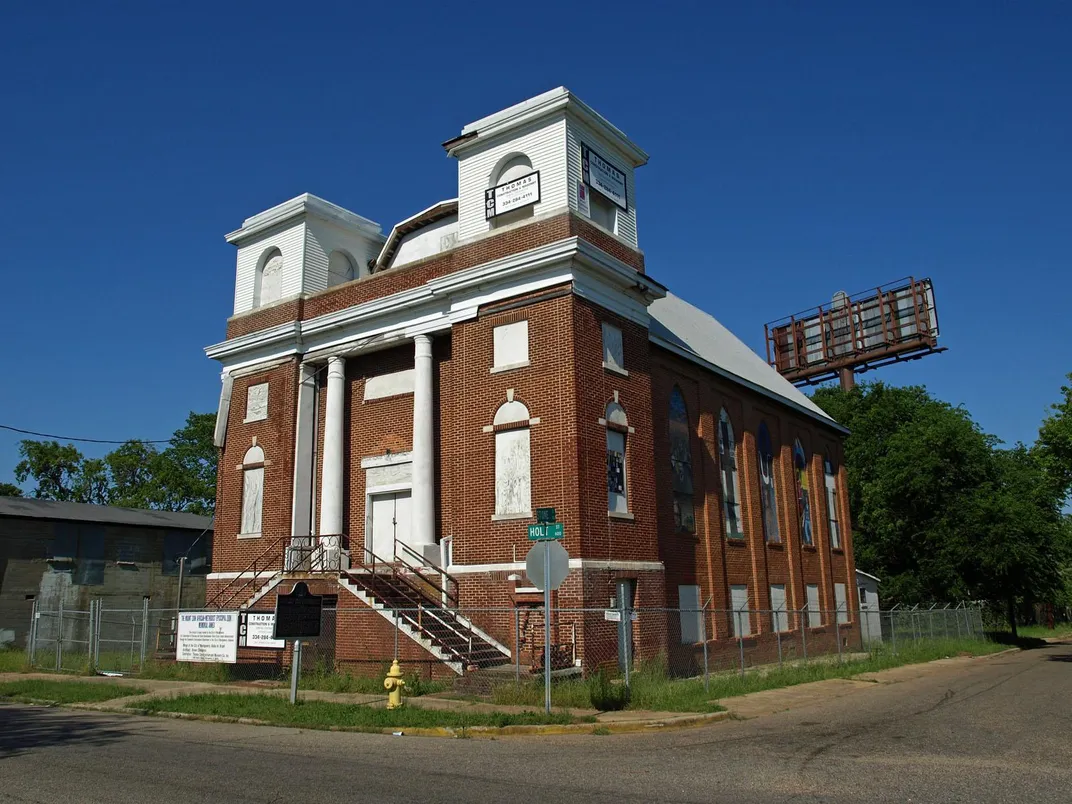Church Where MLK Launched His Civil Rights Career to Become a Museum
The young pastor assumed a leadership role in the Montgomery bus boycott during a 1955 meeting at Mt. Zion AME Zion Church
:focal(1030x529:1031x530)/https://tf-cmsv2-smithsonianmag-media.s3.amazonaws.com/filer/59/83/59838ef0-250d-4b7d-9ffd-67e3dfce065e/screen_shot_2021-08-16_at_23258_pm.png)
The church where a young Martin Luther King Jr. launched his civil rights career is set to become a museum after receiving a long-awaited grant from the National Park Service (NPS), reports Brad Harper for the Montgomery Advertiser.
Mount Zion AME Zion Church in Montgomery, Alabama, was first approved for a $500,000 grant in 2018. Leaders originally planned to turn the space into a museum and open to the public by 2020, the Associated Press (AP) reports. But the Covid-19 pandemic and other complications delayed funding until now.
The church’s Gothic Revival structure dates to 1899. It housed worshippers until 1990, when the congregation moved to a new building, as Harper reported for the Advertiser in 2018. A 2002 survey by the National Register of Historic Places found that the church fell into serious disrepair during its two decades of vacancy.
Charles “C.P.” Everett, president of the Central Alabama Community Foundation, which is spearheading renovation efforts, tells the Advertiser that workers recently began repairing the historic structure. Crews will have to contend with broken windows, large holes in the building’s roof and other damage.

“We’re moving forward,” Everett says.
Zion AME played a pivotal role in civil rights history. On December 1, 1955, police arrested Rosa Parks after she refused to give up her seat on a city bus to a white passenger. Parks’ bold decision sparked the Montgomery bus boycott, a year-long mass protest against segregation on public transit that many cite as the launch of the American civil rights movement.
Toward the start of the boycotts, on December 5, a group of local Black ministers and leaders gathered at Zion AME, where they officially established the Montgomery Improvement Association (MIA), a group tasked with overseeing and organizing the boycotts. King, then a 26-year-old pastor at nearby Dexter Avenue Baptist Church, was elected as the organization’s president.
Per the AP, King was hesitant to accept the position—his first official civil rights leadership role. The election “happened so quickly that I did not even have time to think it through,” he recalled in his 1958 memoir. “It is probable that if I had, I would have declined the nomination.”
King’s choice proved fateful: According to Stanford’s Martin Luther King Jr. Research and Education Institute, his highly publicized role as the leader of Montgomery’s nonviolent protests boosted his national profile and galvanized people across the country to the civil rights cause.
Immediately after his election, King prepared a speech for that evening’s gathering of protesters at Holt Street Baptist Church, a congregation down the street from Zion AME.
This mostly improvised speech set the tone for the year of boycotts and King’s next decade of activism, wrote Louis Menand for the New Yorker in 2018. The newly elected leader extolled Parks’ efforts and argued in favor of nonviolent collective action.
“We are not wrong in what we are doing,” King declared.
He continued, “If we are wrong, justice is a lie. Love has no meaning. And we are determined here in Montgomery to work and fight until justice runs down like water and righteousness like a mighty stream.”
/https://tf-cmsv2-smithsonianmag-media.s3.amazonaws.com/accounts/headshot/nora.png)
/https://tf-cmsv2-smithsonianmag-media.s3.amazonaws.com/accounts/headshot/nora.png)